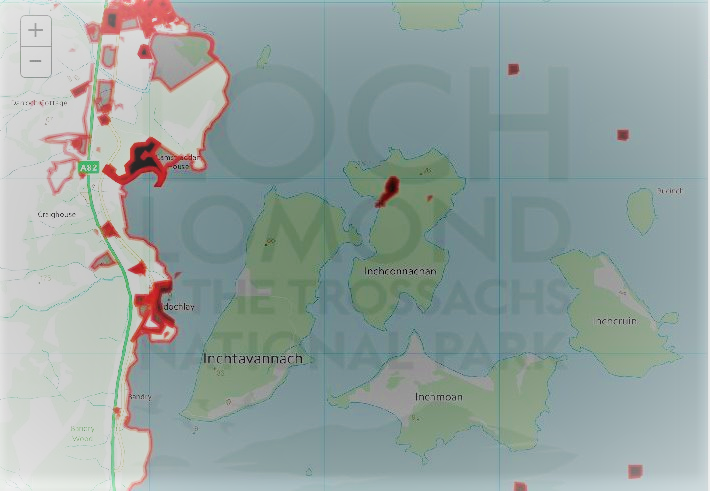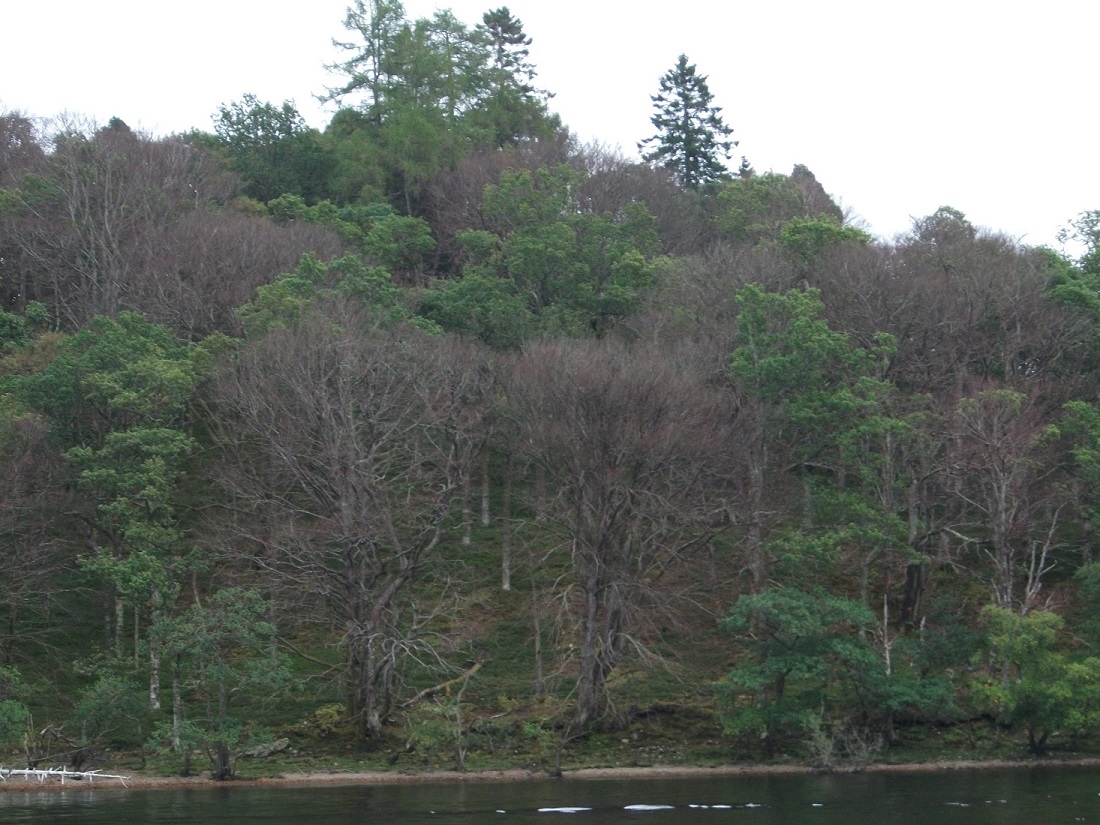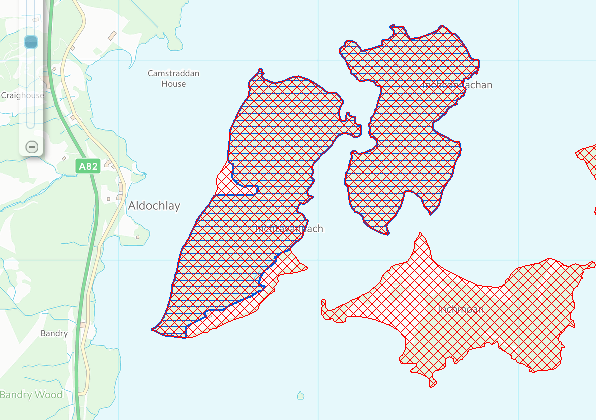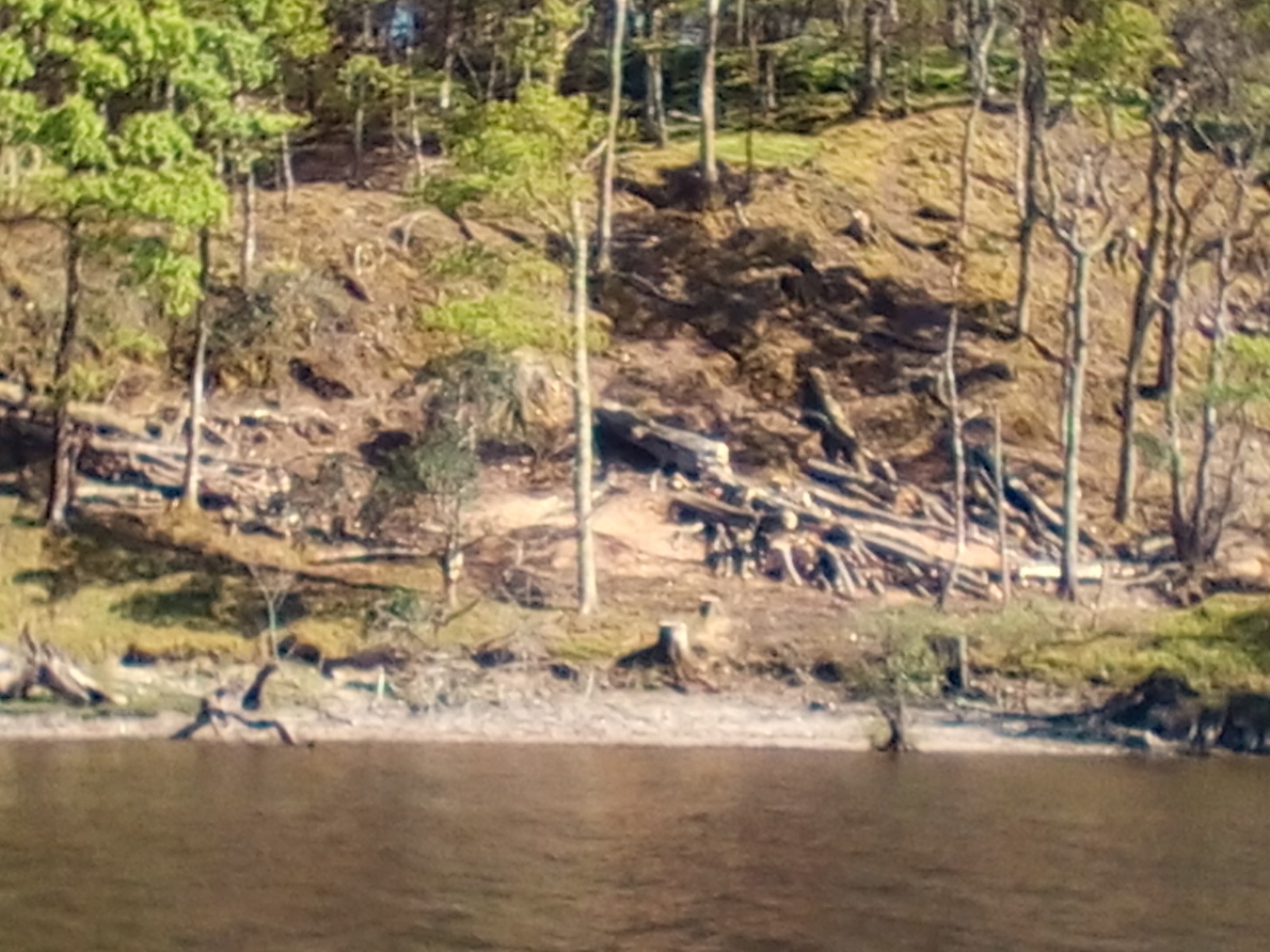
The four aims set out by the National Parks (Scotland) Act 2000:
- To conserve and enhance the natural and cultural heritage of the area.
- To promote sustainable use of the natural resources of the area.
- To promote understanding and enjoyment (including enjoyment in the form of recreation) of the special qualities of the area by the public.”
- To promote sustainable economic and social development of the area’s communities.”
These aims are to be pursued collectively. However, if there is conflict between the first aim and any of the others then greater weight must be given to the first aim (section 9.6 of the National Parks (Scotland) Act).
… but not always it seems!
Loch Lomond is famous for its beautiful wooded shores and islands.
Sadly the island of Inchtavannach, Loch Lomond no longer comes into that category.

After what can only be described, in my opinion, as the appallingly disastrous poisoning of beech trees on the island of Inchtavannach (see here), I tried to find a Land Management reference to the whole debacle.
The Planning Application (Planning Ref. 2012/0103/DET (see here)) by Luss Estates, approved by the Loch Lomond and Trossachs National Park Authority, for the demolition of the small disused lodge and boat shelter, and replacement with a huge lodge for holiday let with warden accommodation, boathouse and gated pontoon on Inchconnachan contained an Inchconnachan Management Plan 2015-2020. It was here that I found, what to me are conflicting references to woodlands on both Inchconnachan and Inchtavannach (P.16) :-
“1.1 Past and present management for land management
The SNH Site Management Statement for the SSSI states that the oaks on neighbouring Inchtavannach were planted from Dutch stock approximately 200-300 years ago and were managed to supply small timber products and tannin for the factory at Balloch. Inchconnachan has a similar history with woodland management …”
So, the oaks on Inchtavannach are not indigenous, they did not originate or occur there naturally … but were planted!! So why,might you ask, were the beech trees poisoned?
“1.2 Impacts of development of lodge
As the development footprint covers only a small amount of the semi-natural woodland it is expected that no W 17b oak woodland will require to be felled or cleared/thinned.
The development is expected to involve the loss/limbing of some of the non-native conifers and removal of the invasive Rhododendron/azaleas for the construction of the new lodge, path network, and pontoon/pier.
Care will need to be taken during construction of the new boathouse and access tracks to build the new lodge to ensure no damage to the mature Scots Pine, alder woodland and mature beech located along the shoreline.”
2.1.3 Potential for improvement of wildlife features
Inchconnachan and Inchtavannach SSSI interest has notifiable features upland oak woodland and capercaillie. Site Condition Monitoring by Scottish Natural Heritage states that the oak woodland is also unfavourable condition (the capercaillie had died out)”
So, the management plan stated the mature beech along the shore on Inchconnachan were to be protected at the same time as improving the condition of the oak woodland.
The Planning Application

The 2012 planning application was for a development within the Special Area of Conservation, which is supposed to offer the highest level of protection for conservation areas, on Inchconnachan. It appears to have been approved on the basis it was on the site of a former development on the island which had not yet been colonised by oak trees. The LL&TNPA approved it providing no oak trees were affected and special measures were adopted to protect trees overhanging the site:-
3.Habitat and Species Protection Measures: No work shall commence on demolition of the existing or construction of the new building of the development hereby approved until the undernoted documents have been submitted to, and approved in writing by, the Local Planning Authority or otherwise complied with. The protection measures (as may be approved pursuant to this condition) shall thereafter be complied with during construction works.
a) Any trees whose canopies overhang the development footprint should be covered by a Tree Protection Plan that will firstly be submitted to, and approved in writing by the Local Planning Authority before works commence. The Tree Protection Plan shall set out measures to protect the root plates of these trees from vehicle pressure during and after construction, with particular regard for trees associated with oak woodland habitat. No storage of building materials or piling of soil shall take place within the protected areas established pursuant to this condition.
The principle behind this decision appeared to be while existing oak trees should be protected, the potential for them to recolonise new areas was not so important and ground without them could be used for development. One might ask therefore if the same principle could not have been applied to save the mature beech trees on Inchtavannach? It appears however that its okay for development to take place in a Special Area of Conservation on one island within the Lomond Woods SAC but not for trees which preceded the oak woodland to remain on another.
So much for the four aims set out by the National Parks (Scotland) Act 2000 and aims 1 & 4 in particular.

It also appears to be permissable for the 300 year old beech trees on Inchtavannach, apparently both native and indigenous, to be poisoned by SNH but they must be cared for by Luss Estates on Inchconnachan!
How can this be?
The blame for the poisoning of the beech trees on Inchconnachan cannot be laid solely at the door of Luss Estates. Their Land Management Plan, to which I refer above, has many references to SNH and LL&TNPA and it is clear they approved the said Plan. There appears to me to be too many Government quangos with too many fingers in too many pies (incidentally, acorns were milled and used as flour in times past). This appears to result in conflict and botched undertakings as on Inchconnachan. It seems to me that many of these Government quangos do not consult with one another. Indeed it was suggested by a Board Member at an LL&TNPA Board Meeting (albeit on a different topic) that there was a need for more ‘joined up thinking’.